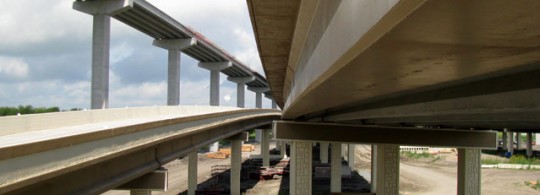
The financial crisis that stretches back to 2008 has brought deep structural changes that affect some of the core features of infrastructure project financing. In this paper we’ll comment briefly on some of those changes that stem from banking regulation and the state of public finances and we’ll also indicate the likely evolution of project financing based on new players in the market.
As equity investor, in the projects, which are the most relevant financing terms?
- It is key that borrowings are denominated in the same currency as the revenues of the project. In countries where this is not feasible, or somewhat limited, more capital is needed to absorb potential adverse Foreign exchange movements.
- When you are dealing with non-recourse financing you also seek that debt service follows the profile of operating cash flows.
- Tenor: If financing is short or medium term, refinancing risk can endanger shareholders returns.
Ideally tenor and amortizing schedule would therefore follow revenues, or better, cash generation, but this is becoming ever more difficult with banks leaving many markets.
Bonds usually have principal repayment only at maturity (bullet). Private placements allow more flexibility in repayment calendar but the size of the market is much smaller.
If there is traffic risk we’ll be looking to finance part with floating debt to hedge against underperformance of the economy (short term rates show significant correlation with GDP and inflation).
In some projects financedby Cintra in the US under TIFIA (Transport Infrastructure Finance and Innovation Act) there is payment flexibility along time, with deferrals if certain levels of cash generation are not met. Hence variance of equity returns is reduced in scenarios of revenue underperformance.
THE MARKET HAS CHANGED WITH THE FINANCIAL CRISIS. HOW?
Spanish sponsors have benefitted in the past from the strong appetite of European banks awash with liquidity and willing to lend through long-term facilities.
Going forward, it is difficult to expect banks to play the same role as in the past given changes in regulation and the business model they are widely adopting. They will often look to originate and distribute the deal to investors. The quicker banks get the deal off their books, the better.
Given those goals, banks will look for projects that can be financed readily in the capital markets, in other words that they could get a high rating (investment grade normally).
Eventually, tenor will be set by the capital markets (bonds, private placements). If there are investors like Pension Funds and Insurance companies in need of duration, long tenors will be achieved.
Inexorably, banks will reduce materially their balance sheets and bonds and private placements will replace them in the medium/long term.
Bonds and private placements bring challenges of their own. We could point out the following arising from investors practice:
- Debt investors have limited data on infrastructure risk (lack of credit history). This boosts rating agencies relevance.
- They are reluctant to take on construction risk although there are success stories like as Cintra’s managed lanes project in the US.
- They usually struggle to fund through time (they clearly prefer upfront drawdown in general).
- Lack of resources to analyze opportunities and close deals with complex documentation. Project due diligence also required.
- Tend to prefer bullet maturities rather than amortizing schedules.
It is true that during the transition period when banks’ balance sheets are reduced and new players are driven up the learning curve, credit is likely to shrink. Nevertheless, given the level of liquidity together with the underweight exposure to infrastructure in investors’ portfolios we have a positive outlook for the sector.





There are no comments yet